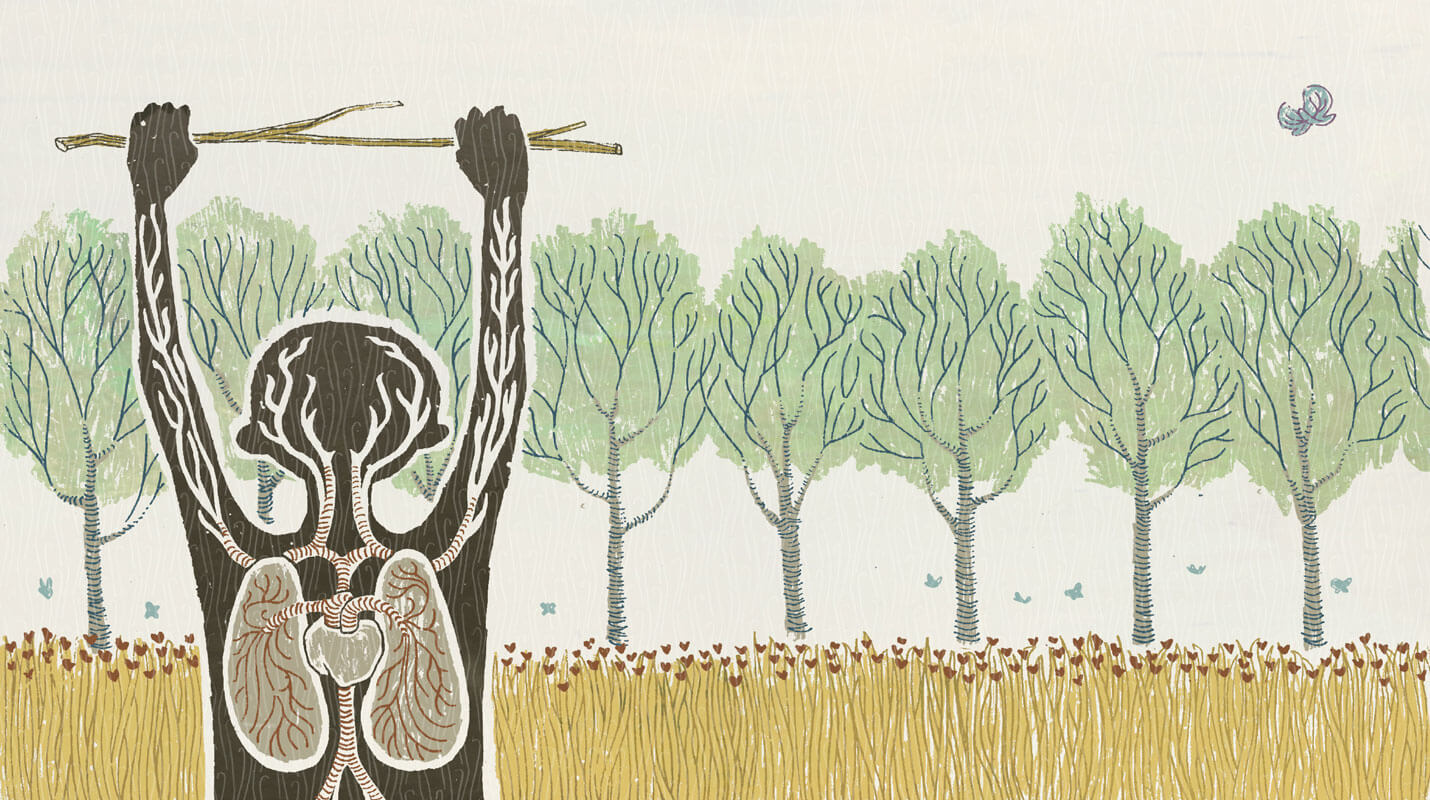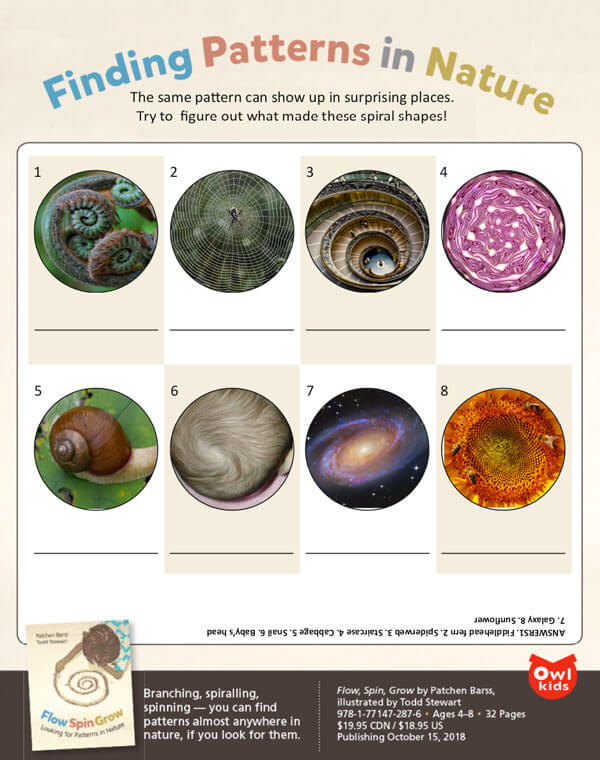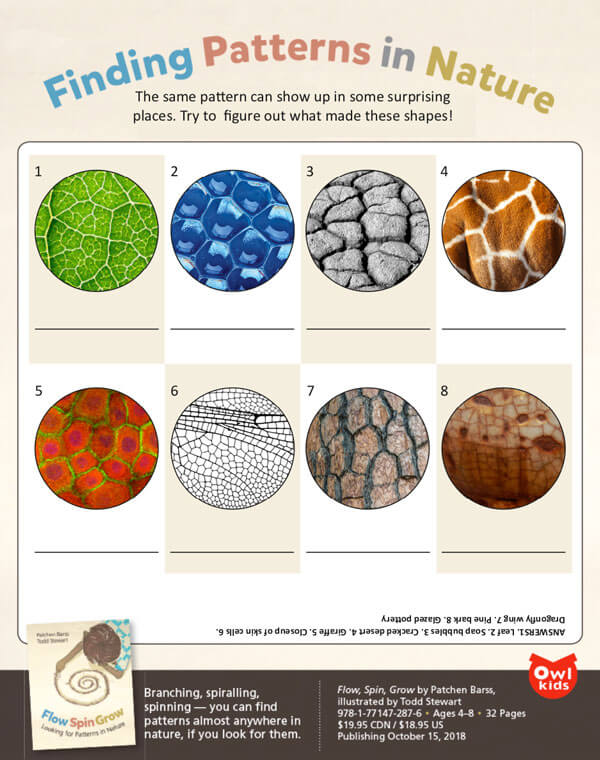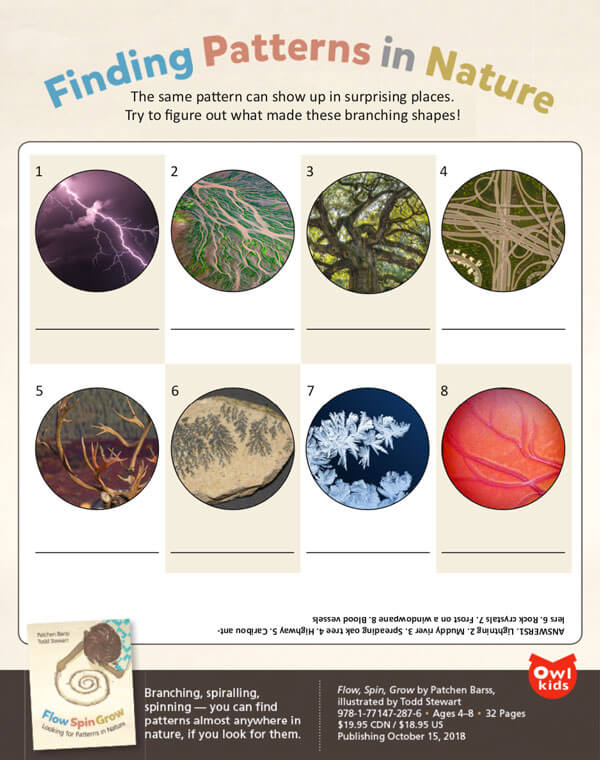
There’s a code hidden in the shape of things…
Flow Spin Grow: Looking for Patterns in Nature
Author: Patchen Barss
Illustrator: Todd Stewart
Publisher: Owlkids Books
Branching, spiraling, spinning—you can find patterns almost anywhere in nature if you look for them. Just as the branches of a tree spread upwards into the sky, roots branch deep into the ground. Branches also spread through our bodies, inside our lungs and veins. Connections like these are everywhere: Storms, pine cones, snail shells, and ears all have spirals. Electrons, moons, yo-yos, and galaxies all spin.
With brief text and full-spread illustrations, this book inspires kids to observe, discover, and explore hidden structures and shapes in the natural world around them and within them. Why are things the way they are? This question, key to scientific inquiry, runs throughout the text.
Stewart’s multi-layered screen prints show natural world’s inherent beauty, from the curve of your ear to the spiraling arms of our galaxy. Kids will come away with a deeper understanding that we are all connected to nature and part of its patterns.
Finding Patterns in Nature
Resources for teachers and students to accompany the book.
Reviews
This eye-catching concept book inspires readers to look around them and find repeating patterns and structures in everything from their bodies to storms to electrons. It’s STEM in disguise. Science writer Patchen Barss provides the text, while Todd Stewart (See You Next Year) uses multi-layered screen prints for the mesmerizing artwork.
— Quill and Quire
Clear illustrations and easy-to-read- aloud text will help make complex concepts understandable, especially for younger readers.
— Kirkus Reviews
This book has the power to change how kids ultimately think about math and science.
— Goodreads
A note from the author
For more than 20 years, I’ve made my living talking to researchers and telling their stories. When I became a dad, I was struck by how often kids ask the exact same kinds of questions as scientists. Just try to figure out which of these questions were asked by research scientists, and which by preschoolers:
- Where does time go?
- Why do people shop?
- Why do dogs like people?
- What’s it like to be a bat?
- What makes things fall down?
- Did dinosaurs invent flowers?
- Why don’t jellyfish have faces?
- Is the moon hot or cold?
Ready for the answer? The even-numbered questions are the titles of serious academic papers. The odd-numbered questions came from children.
I wrote Flow Spin Grow in recognition of the fact that kids are scientists in every meaningful way. It’s not just that they ask similar questions—they continually test hypotheses and refine their theories about how the world works. They challenge every assumption and test every rule. They cannot let a mystery lie.
This books is about the patterns that appear and reappear in nature. It’s an invitation to apply creativity and inspiration to the act of doing science. And it’s about the pleasure of unlocking the universe’s secrets, and understanding why things are the way they are—an activity equally beloved by scientists and children.
— Patchen Barss


